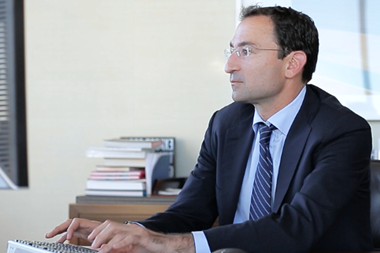This time last year, five-year swaps sat just above 3%, with the forward curve predicting they would peak at around 4%. What some initially thought would be a brief spike in rates has now become fully embedded.


Capital values have been affected and seemingly the balance of return has shifted from equity to debt – at least on a risk-adjusted basis.
Knight Frank recently conducted a survey of 50 leading institutional investors, who have a combined total of more than £76bn worth of living sectors assets currently under management. Of those, 62% put the cost of debt at the top of their list of challenges.
This is unsurprising. Over the last decade rates have been abnormally low, while leverage has been restrained. With both low leverage and high rates now there is the need for a step-change in approach.
Many investors find themselves in the challenging position of sitting on existing debt situations that need resolving, while also being under new pressure to deploy.
It’s been a hesitance game over the last few quarters, and transactional activity has slowed as participants watch key economic data unfold. Our view is that this is broadly the peak, and while rates will eventually fall, the decline will be slow, and inflation will continue to be above normal for at least the next two or three years.
Amid this, real interest rates are still negative at minus 75 basis points, which compares to an historic long-term average of 1.47% positive. While this continues, it’s a good time to be taking a levered play on rebased assets.
The low-rate environment of 2009 to 2022 is unlikely to return, but as debt yields become more attractive to investors, the lending market has become more sophisticated in a way that wasn’t traditionally available, and it’s ripe for structuring deals that provide the security and flexibility borrowers are looking for.
Historically, banks dominated lending, with their decision-making driven primarily by policy and regulatory cost. Today, non-bank lenders are thriving because they can craft bespoke terms that suit borrowers. They offer greater flexibility, have deployment targets and investment professionals that understand real estate and they operate in a far less regulated environment.
Furthermore, as traditional private equity houses shift from equity to debt, non-bank lenders are in fierce competition. Lender appetite for the living sectors, the demonstrable track record and robust fundamentals mean that purpose-built student accommodation, build-to-rent and seniors housing funding opportunities are the favoured sectors by banks and non-bank lenders.
This is due to greater liquidity, higher loan-to-values and competitive pricing. The high interest level from all lender types means that these are exciting sectors in which to be able to craft creative debt solutions.
Finally, the sector is moving out of this volatile period of uncertainty and has a handle on where rates are landing, real rates are still negative and most of the capital-value rebasing has occurred.
The new shape of the lender universe is sophisticated and complex and, thanks to the dearth of transactions in the first half of the year, there’s a lot of pressure to deploy so competition should continue to drive down pricing.
When it comes to bespoke structures, capacity is continuing to tailor terms that work for both the borrower’s business case and the lender’s return requirements. Underpinning this are banks that continue to provide a decent backbone of cheap finance for the right credit.
Debt offers many benefits beyond just returns enhancement. Clearly there is less equity at risk, enabling wider diversification, but also revolving debt can free up key operational liquidity, environmental, social and governance capex lines can provide the funding needed for upgrades and, when positioning for sale, portable debt can act as a valuable differentiator.
In this complex market, it is crucial to structure a debt package that best aligns with the unique objectives of investors. Our advice is to embrace this ‘new normal’ and get creative. Stay open-minded – there’s almost always a solution that works. Engaging with a wide range of lenders will help create optimal value.
While debt isn’t as straightforward as it used to be, there is far more depth to the market now than ever before, and with some well-advised structuring it can work.
Lisa Attenborough is head of debt advisory and Josephine Jones is head of strategic capital at Knight Frank































No comments yet